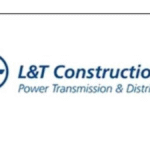Reliance Power ₹6000 Crore QIP Fundraising Plan, the Anil Ambani-led company, has officially announced its plan to raise ₹6,000 crore through a Qualified Institutional Placement (QIP) or Follow-on Public Offer (FPO). Alongside that, it has also approved raising ₹3,000 crore through non-convertible debentures (NCDs), making the total potential fundraising size ₹9,000 crore. This major move is aimed at reducing debt, strengthening financials, and supporting future growth opportunities.
In this post, I’m sharing all details based on my knowledge and research. If you’re an investor or stock market follower, this update is important for understanding Reliance Power’s current position and strategy.
IN THIS ARTICLE
About Reliance Power and Anil Ambani’s Role
Reliance Power is part of the Reliance ADA (Anil Dhirubhai Ambani) Group. It operates across power generation segments including coal, gas, hydro, and renewable energy. Anil Ambani, despite facing financial challenges in the past, is steering Reliance Power towards stability by focusing on debt reduction and capital restructuring.
What Exactly Did Reliance Power Announce?
Equity Raise:
- Amount: Up to ₹6,000 crore
- Mode: Qualified Institutional Placement (QIP) or Follow-on Public Offer (FPO)
- Purpose: Strengthen balance sheet, reduce debt, support growth
QIP means the company will issue shares to qualified institutional buyers like mutual funds, banks, or foreign investors.
Debt Raise:
- Amount: Up to ₹3,000 crore
- Mode: Non-Convertible Debentures (NCDs)
- Purpose: Meet working capital needs and refinance existing borrowings
NCDs are debt instruments where the company borrows money from investors with a fixed interest rate but without converting them into equity shares.
Why Is Reliance Power Raising Funds?
From a financial and business point of view, these are the main reasons:
- Debt Reduction: Reliance Power has faced high debt levels for years. Raising funds through equity and NCDs helps reduce the interest burden.
- Improved Credit Rating: Deleveraging improves credit rating, making future borrowing easier and cheaper.
- Growth Opportunities: With capital infusion, the company can take on new power projects—whether in India or overseas.
- Balance Sheet Strengthening: Improves investor confidence, financial health, and long-term business sustainability.
Reliance Power’s Financial Performance Highlights
Before the fundraising announcement, Reliance Power reported improved financial results:
- Q4 FY25 Net Profit: Around ₹125 crore (compared to a ₹398 crore loss last year)
- EBITDA Margin: Improved from 2.4% to 29.8% YoY
- Revenue: Stable around ₹1,978–2,066 crore
These results show that the company is already on the recovery path, and the new fundraising aims to accelerate that.
Impact on Share Price
After the announcement:
- Stock Movement: Reliance Power shares initially fell by around 1.5–2% due to dilution fears.
- Later Recovery: Shares closed up 2–3% as investors factored in long-term positives.
- One-Year Return: Reliance Power shares have given over +130% returns in the past year!
Key Points Investors Should Note
- Dilution Risk: Issuing new equity shares increases the total number of shares, slightly reducing existing shareholders’ percentage holdings.
- Long-Term Positive: Reduced debt means better financial health and potential for higher future profits.
- Retail Participation: QIP/FPO is usually for institutional investors, but retail investors may get a chance if the company opts for an FPO structure.
- Market Sentiment: Overall market mood around Anil Ambani stocks remains cautious yet optimistic post recent financial improvements.
What Happens Next?
- Shareholder Approval: Reliance Power will seek shareholder permission via an EGM (Extraordinary General Meeting) or postal ballot.
- Final Pricing: The company will decide the price and timing of QIP and NCD issue based on market conditions.
- Regulatory Filings: SEBI and stock exchange filings will follow with exact terms and structures.
- Next Board Meeting: Scheduled for July 19, 2025, to review Q1 FY26 results and progress on the fundraising plan.
Why This Move Matters for Anil Ambani Group Companies
Many Anil Ambani group companies faced financial stress in the past few years. This fundraising plan by Reliance Power shows a serious attempt to restructure and rebuild credibility. It could also boost investor confidence in other ADA group companies like Reliance Infra and Reliance Capital.
Conclusion
Reliance Power’s ₹6,000 crore QIP plan, along with ₹3,000 crore NCD issuance, marks an important step in the company’s revival story under Anil Ambani’s leadership. While there are short-term risks like share dilution, the long-term benefits of reduced debt and a stronger balance sheet outweigh them.
If you hold Reliance Power shares or are considering investing, keep an eye on regulatory announcements and shareholder meeting dates in the coming weeks.
Disclaimer:
This post is for informational purposes only. I’m sharing my knowledge and research experience. This is not a buy/sell recommendation. Please consult a financial advisor before making investment decisions.
SBI Raise 25000 Crore QIP: India’s Biggest Share Sale Explained










